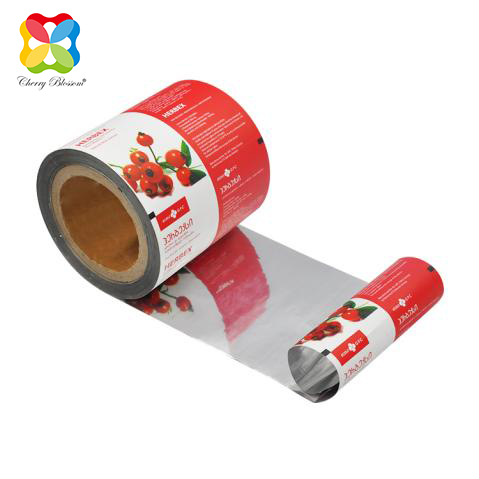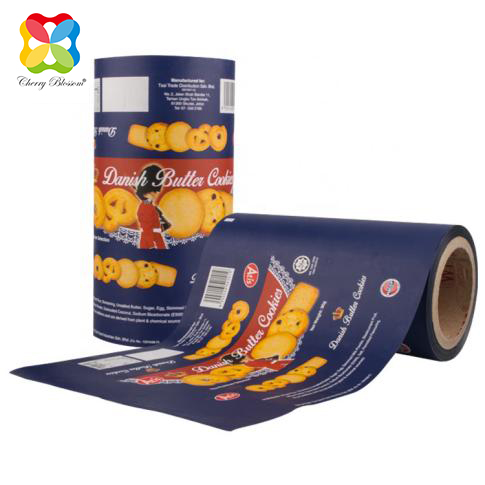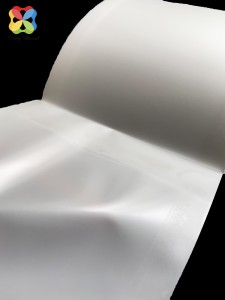1. Universal BOPP film
BOPP film is a process in which amorphous or partially crystalline films are stretched vertically and horizontally above the softening point during processing, resulting in an increase in surface area, a decrease in thickness, and a significant improvement in glossiness and transparency. At the same time, due to the orientation of stretching molecules, their mechanical strength, airtightness, moisture resistance, and cold resistance have been greatly improved.
Characteristics of BOPP film:
High tensile strength and elastic modulus, but low tear strength; Good rigidity, outstanding elongation and bending fatigue resistance; High heat and cold resistance, with a usage temperature of up to 120 ℃. BOPP also has higher cold resistance than general PP films; High surface gloss and good transparency, suitable for use as various packaging materials; BOPP has good chemical stability. Except strong acids, such as Oleum and nitric acid, it is insoluble in other solvents, and only some hydrocarbons have swelling effect on it; It has excellent water resistance and is one of the best materials for moisture and moisture resistance, with a water absorption rate of less than 0.01%; Due to poor printability, surface corona treatment must be carried out before printing to achieve good printing results; High static electricity, Antistatic agent shall be added to the resin used for film production.

2. Matte BOPP
The surface design of matte BOPP is a matte layer, making the appearance feel like paper and comfortable to touch. The extinction surface is generally not used for heat sealing. Due to the existence of the extinction layer, compared with general BOPP, it has the following characteristics: the extinction surface can play a shading role, and the surface glossiness is also greatly reduced; If necessary, the extinction layer can be used as a hot cover; The extinction surface has good smoothness, as the surface coarsening has anti adhesion and the film roll is not easy to stick; The tensile strength of the extinction film is slightly lower than that of the general film, and the thermal stability is also slightly worse than that of the ordinary BOPP.

Pearlescent film is made from PP as raw material, added with CaCO3, pearlescent pigment, and rubber modified agent, mixed and biaxially stretched. Due to the stretching of PP resin molecules during the biaxial stretching process, the distance between CaCO3 particles is widened, resulting in the formation of porous bubbles. Therefore, the pearlescent film is a microporous foam film with a density of 0.7g/cm ³ Left and right.
PP molecules lose their heat sealing properties after biaxial orientation, but as modifiers such as rubber, they still have some heat sealing properties. However, the heat sealing strength is low and easy to tear, making them commonly used in packaging of ice cream, popsicles, and other products.

4. Heat sealed BOPP film
Double sided heat sealing film:
This thin film has an ABC structure, with both A and C surfaces being heat sealed. Mainly used as packaging materials for food, textiles, audio and video products, etc.
Single sided heat sealing film:
This thin film has an ABB structure, with the A-layer being the heat sealing layer. After printing the pattern on the B-side, it is combined with PE, BOPP, and aluminum foil to form a bag, which is used as high-end packaging materials for food, beverages, tea, and other purposes.
5. Cast CPP film
Cast CPP polypropylene film is a non stretching, non oriented polypropylene film.
The characteristics of CPP film are high transparency, good flatness, good high-temperature resistance, a certain degree of rigidity without losing flexibility, and good heat sealing. Homopolymer CPP has a narrow temperature range for heat sealing and high brittleness, making it suitable for use as a single-layer packaging film,
The performance of copolymerized CPP is balanced and suitable as an inner layer material for composite membranes. At present, it is generally co extruded CPP, which can fully utilize the characteristics of various polypropylene for combination, making the performance of CPP more comprehensive.
6. Blow molded IPP film
IPP blown film is generally produced using a downward blowing method. After PP is extruded and expanded at the annular mold mouth, it is initially cooled by the air ring and immediately quenched and shaped by water. After drying, it is rolled and produced as a cylindrical film, which can also be cut into thin films. Blow molded IPP has good transparency, rigidity, and simple bag making, but its thickness uniformity is poor and the film flatness is not good enough.
Post time: Jun-24-2023






